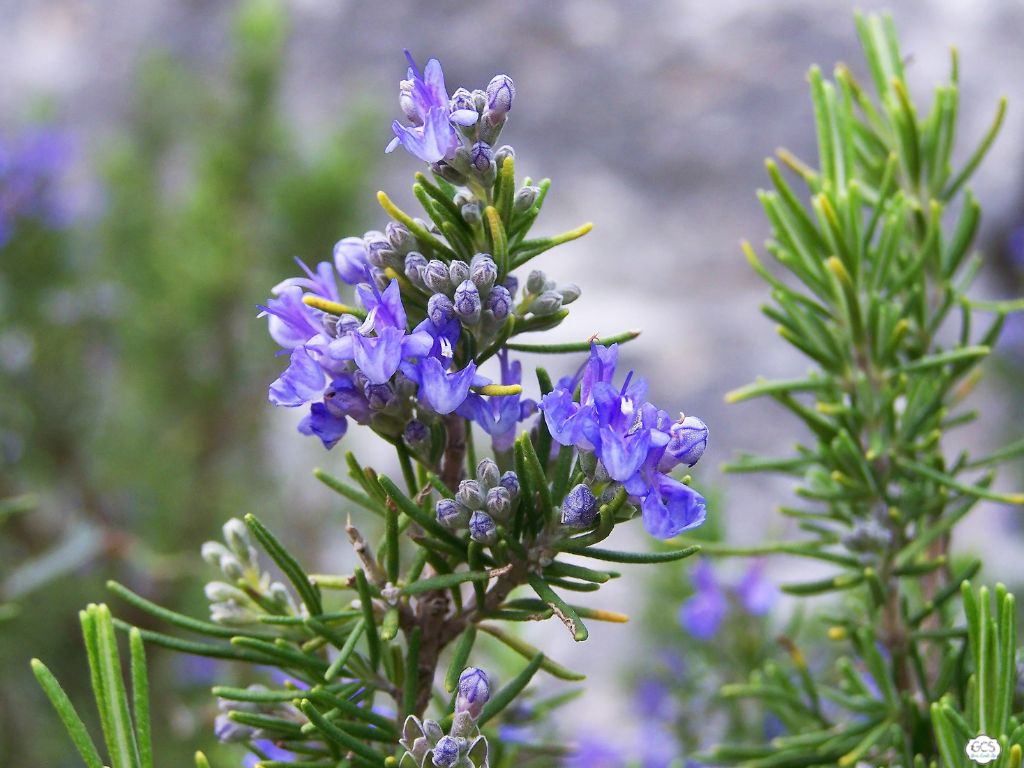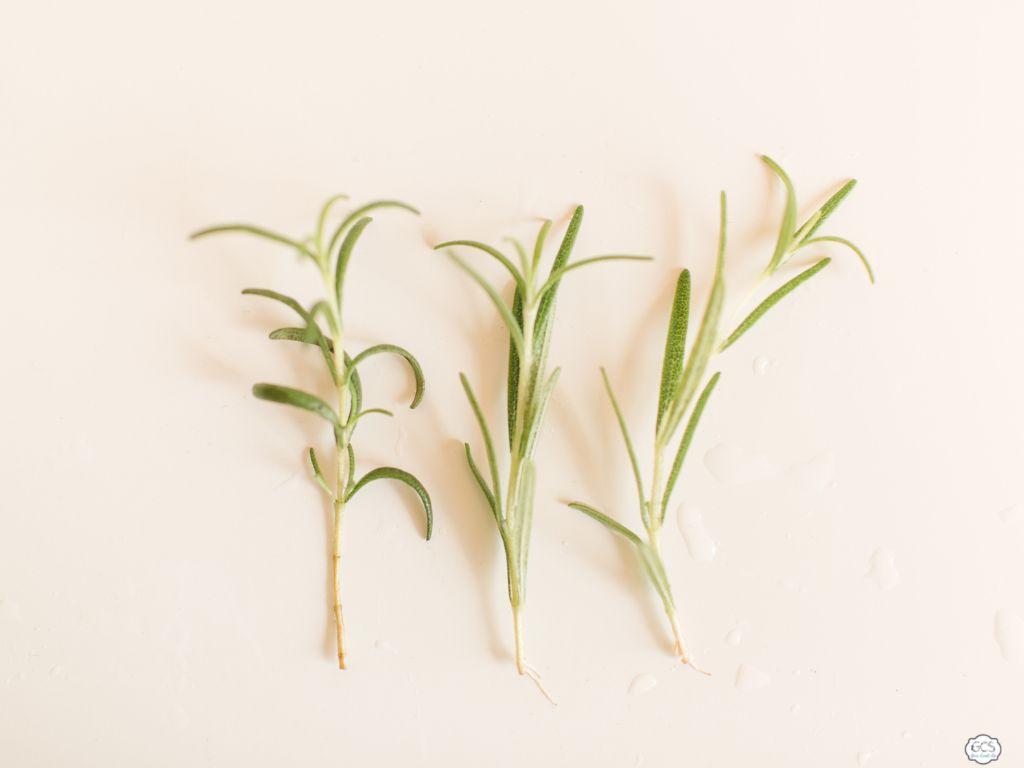Rosemary Bush Care and DIY Rosemary Tea
Sep 21, 2022
Did you know the rosemary tree is actually part of the mint family? It's formally known as Rosmarinus officinalis, but it's a plant we're all familiar with. Sunday roasts, hot baths, and the sharp, spicy fragrance of rosemary essential oil. But did you know you could make tea out of rosemary?
Not only that, but did you know you can use that tea to nourish and rejuvenate your hair? However, with all the information out there about rosemary, it's tough to discern what's important and what's not. And yes, it treats a lot of ailments, but what can it really do for you?
Keep reading to find out.

What Is Rosmarinus Officinalis?
Rosemary is an evergreen plant that is native to the southern Mediterranean area, but it's easy to grow in similar climates. The shrub itself has a wide range of diverse growth habits, meaning we can get creeping rosemary, small plants, tall and compact shrubs, or even open and spiraling branches. The name translates to "mist of the sea," which is apt considering it likes to grow in craggy rocks on cliff faces overlooking the ocean.
It's an aromatic herb with a distinctive, sharp flavor. Rosemary does best in areas with good humidity and relatively dry soil. When grown in the right conditions, it can grow up to several feet. The plant has thick leaves that resemble wide needles. These leaves are dark green on top and powdery, or hairy, underneath. When flowering, rosemary produces small, pale pink, blue, or white flowers that grow in clusters of two or three along each branch.
Before we start:
This herbal information is just that, information. This blog post and I DO NOT INTEND to treat, cure, prevent any disease, or diagnose any disease or illness. This is for informational, educational, and entertainment purposes only. Please consult a physician before using herbs medicinally. These statements have not been evaluated by the food and drug administration. St. Fiacre’s Farm and Grow Create Sip assumes no liability for inaccuracies.
This post also contains affiliate links. Translation: We get a little kickback for sharing certain products at no additional cost to you should you choose to purchase said items. And - thank you for supporting our farm and family! Read the full disclaimer here.
The Benefits of Rosemary for Home Remedies
Rosemary is high in a mineral called Manganese, which is essential for metabolic health. It's also rich in antioxidants and anti-inflammatory compounds, which makes it great for soothing aches and pains. It's also considered a cognitive stimulant and can help improve the performance of memory.
Rosemary oil is also known for promoting hair growth, preventing baldness, and treating dandruff and itchy scalps. The benefit of rosemary tea is that you can make it easily, even with fresh sprigs.
Rosemary is one of those plants that's great for targeting concerns all over the body. It's a great source of A, C, and B-6 vitamins, and is packed full of iron and calcium. It's also able to:
- Stimulate hair growth
- Supplies increased levels of oxygen to the brain
- Relieve pain
- Repel insects
- Ease stress
- Increase circulation
- Combat fatigue
- Stimulates blood flow
- Improves memory and concentration
- Eases anxiety, tension, and depression
- Protects cells against free radical damage
- Enhances nutrient absorption
- Resists infections
- Prevents waste accumulation in the body
- Eases inflammation
- Fights bronchial infections
- Improves breathing
- Neutralizes food-borne pathogens
Growing Rosemary
There are several reasons why it's easy to grow rosemary. Rosemary is a perennial, and therefore exceptionally tolerant to heat and drought, but it can also withstand relatively low temperatures. It will obviously not thrive in the arctic, but on a windowsill, rosemary in winter will do just fine.
Rosemary also roots easily from cuttings, which means you can easily produce more once you've grown a full bush, and starting rosemary from seed can be just as easy, though it's slow to germinate.
Starting From Seed
Although it is slow to germinate, and sometimes doesn't germinate at all, growing a rosemary bush from seed is absolutely possible. Start off by choosing a small container and making sure you have a plastic humidity dome or something similar at hand.
Prepare a seed-starting mix with good drainage for your rosemary seeds. Try an 1/2 part compost to 1/4 part perlite and 1/4 part peat moss. Lightly moisten this before adding it to your container.
Sprinkle three to four seeds on top of each seed mix and cover with a small amount of soil, but not so much that they can't see the sun. Lightly water, then cover with your humidity dome. Store in a sunny spot till germination. When the rosemary seedlings appear in about 2-3 weeks, remove your cover and leave them to grow till they're above 3 to 6 inches tall.
When you're ready to transplant, place them in compost-rich soil with excellent drainage.

Growing From a Cutting
Because seeds can be iffy, most people opt to grow their rosemary via propagation, or cuttings. This is also pretty easy, and most rosemary cuttings will mature in a few months. Start off by using sharp scissors to take a few cuttings. Make sure you're cutting from soft, new branches. You want to cut about 5-6 inches from the tip.
Remove the lower leaves before placing the cuttings in a jar of water. Make sure this jar is in a warm spot with indirect sunlight. Every 2 to 3 days, replace the old water. You should see root growth in a few weeks. If the cuttings shed and turn brown, then they, unfortunately, didn't survive.
When you have roots, plant each stem into a small container with a sandy soil mix.
Soil
Rosemary does well in containers when they live in soil-based, well-draining compost. You can add rocks to the bottom of your pot to help drainage. Rosemary does well enough in the garden, though rarely as well as it does in pots. That's largely because the soil in a garden isn't always ideal for a rosemary plant.
Rosemary likes to trap its own moisture in its root system, which is what makes it so hardy, but gardens tend to have deep soil structures which are regularly exposed to air (unless you use the no dig method), meaning the water never really gets trapped. You want your soil to be rich in nutrients and sitting at a rough 6 to 8 pH balance.
Water
During any dry spells, water your rosemary when it's completely dry. We should water Rosemary in pots roughly every week in summer and once every 2 weeks in spring and fall. Don't water rosemary in winter, as this is when it's dormant, and additional water will increase its chance of root rot.
Light and Temperature
Rosemary grows best in zones 7 and warmer, but if you live in a colder area, grow it in a pot and bring it indoors in winter. In terms of sunlight, rosemary needs about 6 to 8 hours a day. This can be tricky when growing rosemary indoors, so you may need to supplement with artificial light. If you're planting outdoors, wait till outdoor temperatures reach around 70°F and start cuttings indoors.
Rosemary Plant Care
Rosemary is easy to care for when its growing conditions are right. Since rosemary doesn't thrive in freezing conditions, it's often best to grow them in containers. This also makes it easier to control their water levels, as rosemary prefers to stay on the dry side. Because of this, keeping your rosemary in terracotta pots is ideal.
Finally, trimming and pruning your rosemary will make for a healthier, fuller plant. Snip sprigs off once the plant has stopped flowering. The general rule of thumb for pruning rosemary is to never take more than a third of the plant and to make cuts just above a rosemary leaf.
Pests and Disease
The most common issues you'll see with rosemary are root rot and powdery mildew. Mildew can occur during a warm and wet period, and you'll see a dusting of fine, whitish spores over the whole plant. You can get rid of this with a fungicide spray or a DIY mix of water and baking soda.
Unfortunately, root rot almost always kills a plant. You'll see the signs of root rot if the plant becomes limp and the leaves and stems die off. If caught early, you can dig up the whole plant and prune any infected areas before dusting it with fungicide powder. If the whole root system is black or mushy, it will not survive.
Some common pests you may encounter on your rosemary are aphids, thrips, mealybugs, and spittlebugs. You can use horticultural oils or neem oil to help with this, as well as organic insecticidal soaps.
Harvesting Rosemary
Most herbs are best harvested before they flower, and rosemary is no different. You ideally want to cut the stems in the morning just after the dew dries, but before the heat of the day sets in. When cutting the hardier stems you'll need to use pruners. Cut just above a leaf joint and wash the plant before you begin the drying process.
Drying Rosemary
There are a few ways you can dry rosemary for later use. We like air drying or using our dehydrator. It's best to dry rosemary in a single layer on a dehydrator tray, then pull off the leaves and store them whole or ground. You can also hang your rosemary up, secured with twine, and dry them till the needles fall off. You can remove the leaves easily by rubbing the stem upwards over a bowl.
Making Rosemary Tea
Rosemary herb tea is super versatile and really tasty, though you don't have to just drink it. You can use rosemary tea even on your hair, which is going to help hair fall, growth issues, and dandruff.
You can use fresh rosemary or dried leaves for this. You'll use roughly the same amount, with about 2-3 teaspoons of fresh leaves, or 1 teaspoon of dried rosemary. Steep your tea in boiling water for about 5 minutes, though the longer you leave it, the more bitter it will become. Rosemary also goes great with many other flavors, like:
- Mint
- Sage
- Thyme
- Lavender
- Citrus
- Olives
- Watermelon
- Ginseng
- Yerba Mate
- Feverfew
- Lungwort
- White horehound
Fancy an apricot rosemary water? Or fresh watermelon with flakes of rosemary and sea salt sprinkled on top? How about we give our hair some food too? Make a heavily steeped rosemary tea, cooled to the touch, for rinsing your hair with it. But we love using rosemary for colds, coughs and upper respiratory ailments and so we crafted this breath tea as a great way to put that rosemary to work!
Save on Health Care While Growing Medicine
Rosmarinus Officinalis is a plant for every season. And we mean that literally because it will grow pretty much year-round. Use it fresh, dry it, or steep it in oil. Maybe a little steeped in some chicken broth is the simplest yet most effective way to use rosemary during cold and cough season.
Know that rosemary has to be one of those staple herbs in your diet, and not just because it's tasty, but because it packs a punch in the herbalism department. It's one of those herbs that's a must-have for any home or garden. Not only is it tasty and must have staple but it can also help save you in the health care department just as can all medicine that you grow on your own.
We would love to invite you to join us in a deeper dive in growing your own herbs so that you can shorten your supply chain and tailor your medicine to your needs. Check out our communi-tea of budding home herbalists just like yourself over in our Herbal Studio & Communi-tea where we have a library of printable herbal resources as well as video resources. Not to mention all of the resources the other's in the communi-tea bring to the table.
I would love to know, do you grow rosemary right now? What is your favorite way to use it? Leave us a comment below and share, you might inspire someone with a new use!
Blog Posts that you may Enjoy
- How to Make Homemade Cough Syrup
- Sea Moss Gummies with Elderberry
- Herbal Apple Cider Vinegar Gummies
- Herbal Tea for Allergies
- Fire Cider Kale Salad
- DIY Infused Oils & Salves













